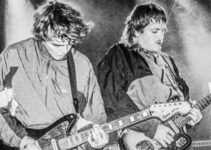Toto need little introduction to the musically inclined; as a band, they have had over four decades of success, including winning several Grammy awards, an induction into the Musicians’ Hall Of Fame And Museum, and over 40 million albums sold.
Perhaps more significant is the fact that they are individually and collectively heralded as some of the best musicians to ever grace the musical arena, having also played on countless sessions for some of the world’s most successful artists.
The classic line-up consisted of Steve Lukather on guitar, drummer Jeff Porcaro and his brother Steve on bass, keyboardist David Paich, bassist David Hungate and singer Bobby Kimball. It is this line-up that played on the band’s first few albums, which included Toto IV in the early 1980. It was this release that catapulted them to mainstream success with the mega hit single Africa, and of course Rosanna with its incredible improvised outro solo.
Among the sessions that Lukather played on include legendary artists like Michael Jackson, Cher, Richard Marx, Lionel Richie, Barbra Streisand, Elton John and Diana Ross. The list literally runs on and on. Steve Lukather is also currently Ringo Starr’s guitarist – a dream come true for someone who grew up as a massive Beatles fan.
Lukather’s playing style is equal parts blistering technique, great melody and an incredible rhythm guitar pocket. It was his rhythm/riff playing and bass parts that set the foundation on Michael Jackson’s Beat It, that then allowed Eddie Van Halen to play one of the most memorable solos ever. But Lukather has always been an advocate for solid rhythm playing over flashy lead.
Steve has also toured and recorded with Larry Carlton. His playing more than stands up alongside that of his hero, and there’s not many who could swap licks with the jazz-blues master and not be found wanting.
Our lesson track is in the key of E minor (E-F#-G-A-B-C-D) and is built on single-note riffs. There are no chords in the arrangement but the overall sound lends itself to E Dorian in places (E-F#-G-A-B-C#-D). The C# note from this mode is played during the solo, which gives it a bluesy edge to the overarching rock sound.
There are several chromatic lines in the rhythm and the solo, and the lead guitar phrase in bar 18, which moves chromatically from D down to Bb lends a rock-fusion style of melody to the more pentatonic and bluesy phrases.
Get the tone
Amp Settings: Gain 8, Bass 6, Middle 7, Treble 6, Reverb
Lukather is generally on the higher-gain side of things, so a good amount of preamp gain is in order (although Steve’s rhythm guitar often has less gain than you’d at first imagine).
Aim for a Soldano or Bogner-type sound if possible plus a bridge humbucker and whammy bar. Effects such as chorus, delay and reverb are all good choices to add to the sonic soup.
Steve Lukather rhythm guitar lesson
Pay careful attention to timing and watch out for the phrases and notes that don’t start on the front of the beat, of which there are many.
Steve Lukather solo guitar lesson
The solo begins with a line that isn’t difficult to play but will require some precision in the way each note then slides a semitone to the next. Using your first finger and third finger is probably the easiest way to play this line.
Bar 23 of the solo features a signature Lukather idea; bend the second string up from the 10th-fret A note to the 12th-fret B with your third finger, then play the C note with your fourth finger at the 11th fret while the bend is still held.
The final bar of the solo has hammer-ons that are scooped with the vibrato bar; depress the bar just ahead of each hammer-on, and then release the note back up to pitch.


